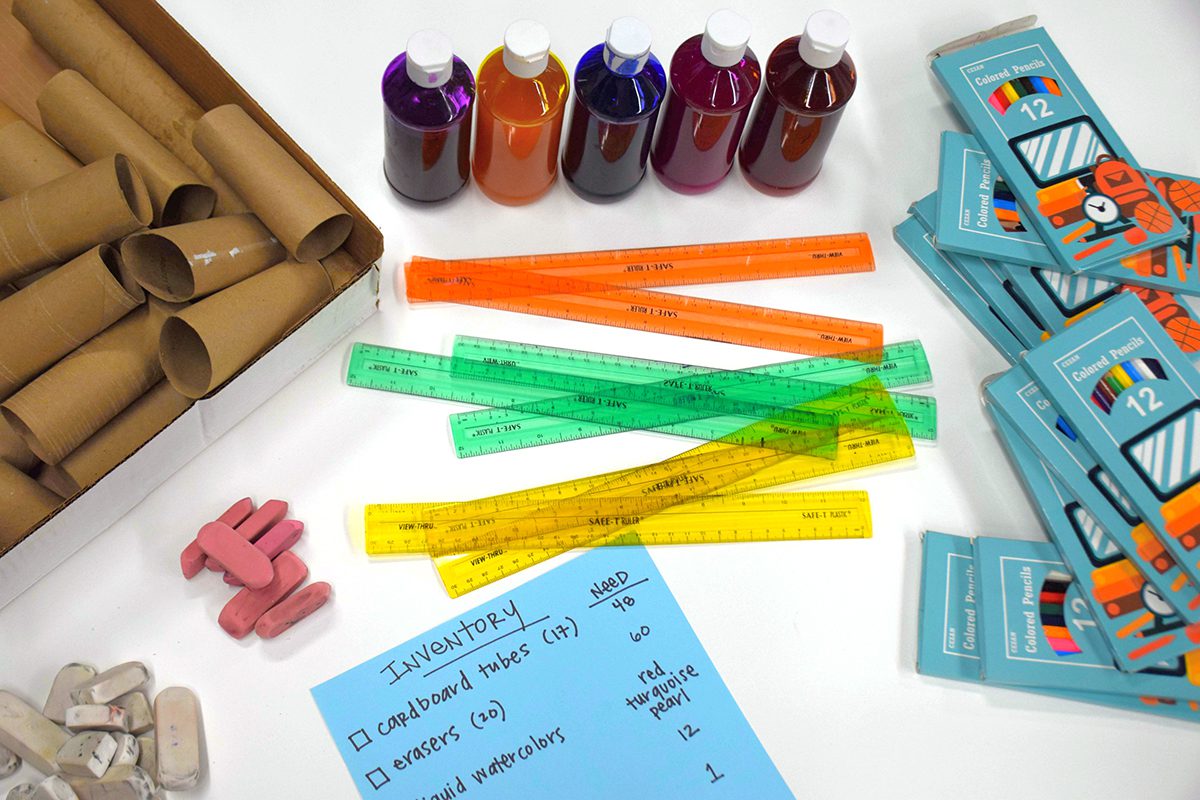Winter break is on the horizon, and many of us are ready for a less structured schedule, quality time with family, and taking a deep breath to process the first semester of school. It’s safe to say that going “back to normal” never happened this school year—and that’s okay! Teachers and students across America rose to the challenge of returning in-person post-pandemic. It feels good to be near the finish line for the first semester!
Pat yourself on the back because it has been unprecedented no matter how you have returned, from students wearing masks and “regular” clothes all day to adjusting to a bell schedule and physically changing classes (not just Zoom rooms!). Even remembering that there are procedures and expectations for everything—this entire first year back feels new.
To illustrate the dramatic leap that students are experiencing, consider this: the last time seventh graders were in a classroom full-time was in fifth grade. They were elementary students! Now, they straddle two wildly different worlds, managing the onset of puberty and their first year of middle school in person.
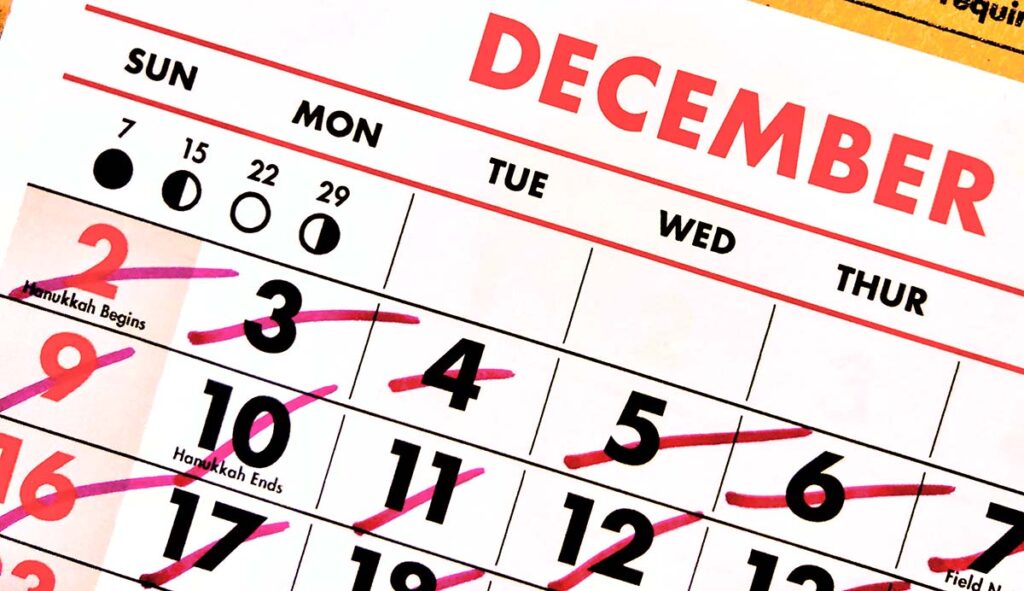
As much as we have yearned to return to school, it has presented many challenges. Let’s take seven lessons learned from this first semester as we plan, focus, and look ahead to the spring.
1. “An ounce of prevention is worth a pound of cure.”
Although this quote, famously coined by Benjamin Franklin, is about fire prevention, it can encourage us to take stock of where we are and protect our own well-being. As you stretch toward winter break and look forward to recharging your batteries, it’s helpful to examine where you started and how it’s going. You will thank yourself later for closing out December thoughtfully and reflectively with your eye on a smooth return in the New Year.
2. Check in on student learning objectives.
Sometime before the quarter and semester ends, speak with your students about their progress. Informal assessments like rubrics, progress check-ins, and portfolio reviews can help determine if students have met the learning objectives you wish to complete before the semester change. Use feedback from these assessments as a springboard for reflective conversation or to gently steer the direction of their focus.
Group games and closure activities are thoughtful ways to engage students to think about and summarize their lessons. Author L. Phillips says, “While other factors affect mastery of a lesson, closure helps learners know what they learned, why they learned it, and how it is useful.” Early finishers can polish their portfolios and prepare for their student-led conferences based on feedback from your check-ins.
3. Schedule student-led conferences.
Student-led conferences are an empowering way to teach students about goal setting, action plans, and how to advocate for their learning. This also supports your connection with them. This informal survey enables you to take the temperature of any given class and identify patterns to address in the new year.
The semester change is a good time to adopt new, positive habits and start with a clean slate. It’s important to acknowledge students who have found their rhythm and are meeting their goals. It is also important to focus on those not progressing as hoped. It may be helpful to revisit their work from the start of the semester. You might need to adjust goals and come up with a new, more realistic growth timeline based on where they started. These conferences can include parents and are an excellent way to offer a summary of where students are in relation to their goals.
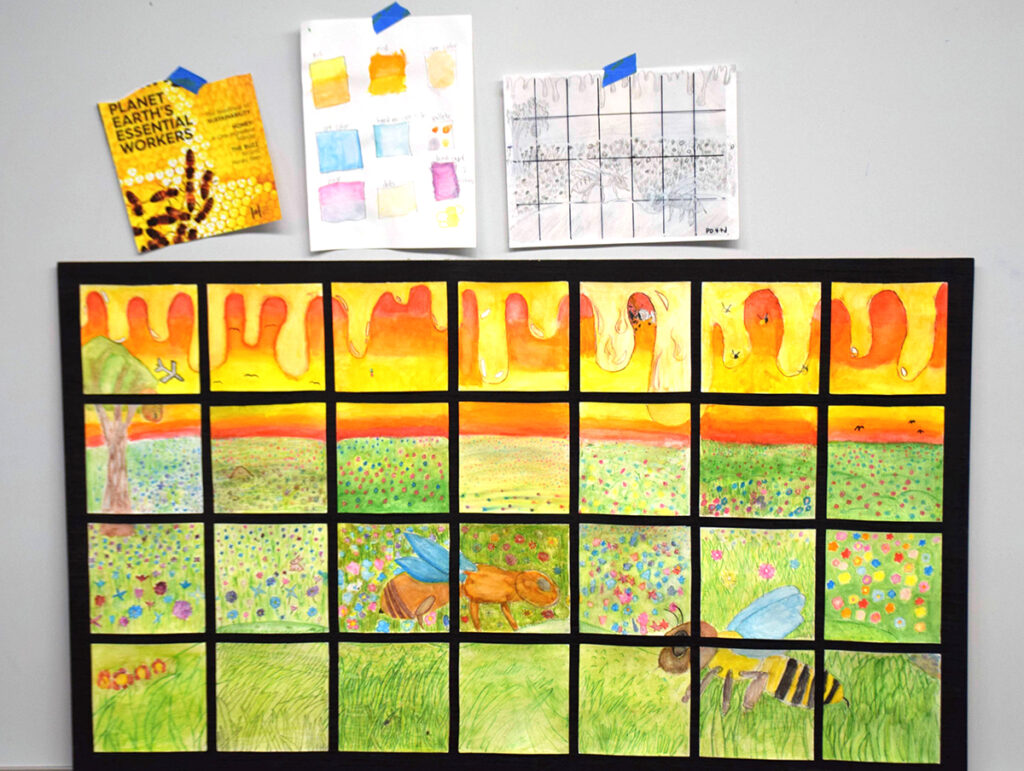
4. Assess your supplies.
Get a jump on your spring semester supply needs by taking inventory of your materials. Most budgets are “use it or lose it” at the end of the school year. So if your budget doesn’t roll over, make your spending plan now. Recycle empty paint bottles, bid your damaged tools “adieu,” double-check your paper supply, and take stock of the condition of all non-consumables, like scissors. Write a list of things you need to replace or replenish, followed by items for end-of-year projects. You can also include any supplies your students took particular interest in that you would like to have on hand in the future. Prioritize purchases based on your remaining budget and most pressing needs. And the biggest help of all? Save a copy of your list for next year’s budget cycle so all your links and quantities are in one place.
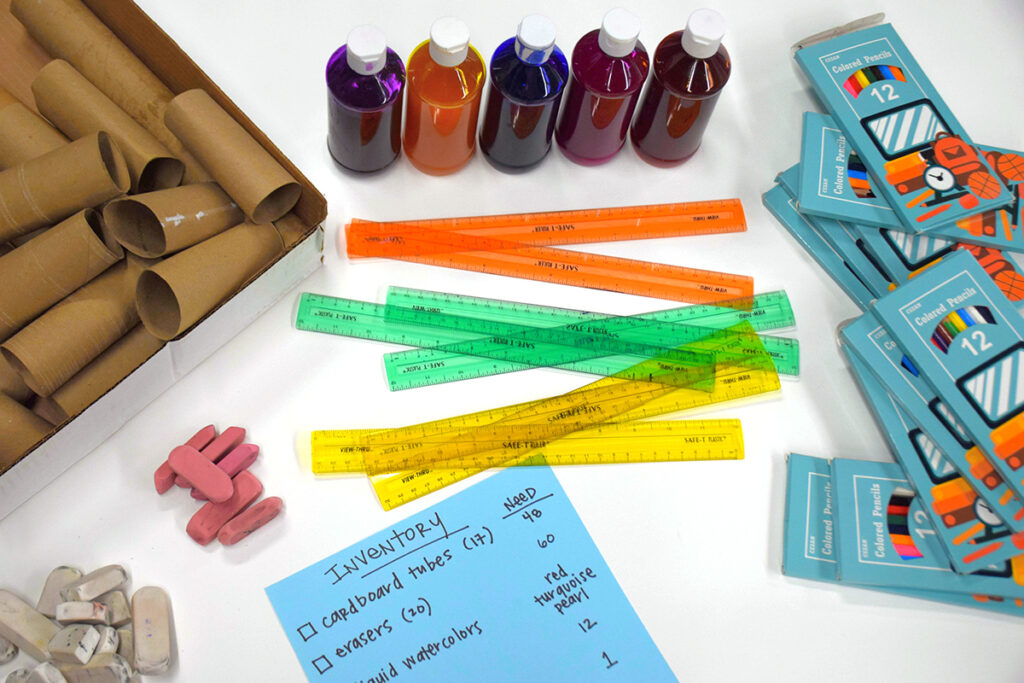
5. Communicate with families.
Emailing a newsletter is a concise way to update families about your end-of-semester plans. Provide resource links and a timeline for portfolio reviews during student-led conferences and family check-ins. These links can be for support and services. You can also ask for donations of upcycled materials from holiday gift-giving to restock dwindling items, like cardboard, tissue paper, and ribbon.
6. Connect with families.
While communicating with families is a helpful thing to do, take a few moments to go one step further. Be sure to circle back with families of students who have been struggling academically, socially, behaviorally, or otherwise. Following up with families and related resource staff shows that you are actively involved. It also provides an opportunity to praise students’ improvements and strategize about future supports. When you connect, take advantage of this time to learn about positive news and any hardships families may be experiencing.
As longer breaks and holidays approach, be mindful that not every family enjoys a relaxed, merry, or indulgent time away. The school provides the nutrition, routines, and structure many students need and cannot get at home. During Covid, child poverty increased. 1 in 7 children lives in poverty, with 71% of this group being children of color.
Many families work up until or through the holiday season. Students spend time with other caregivers or supervise younger siblings. The “break” isn’t the same for all students and may cause stress, anxiety, loneliness, and hunger. Teacher Nancy Barile suggests using a peer buddy system to “encourage students to invite their friends to their gatherings if they know their classmates have no place to go.”
7. Plan ahead.
Ask yourself, “What can I do to feel ready to return to school after the break?” The answer will look a little bit different for everyone, but a few things are universal.
Here are some considerations as you plan ahead in your calendar:
- Update your calendar and planner with new information if your duties or schedule are changing.
- Ask your supervisor when you might expect schedule rotations or changes so it’s not lost in the end-of-semester shuffle.
- Add your spring holidays, vacations, and known events to your calendar.
Teacher Kasey Short finds that “…making one professional goal for the second half of the school year is inspiring without being stressful.” Student surveys and lesson observation feedback from the fall are relevant when it comes to setting goals for the spring. As a starting point, consider what areas you were most successful in and what lessons were the most engaging. Perhaps your spring goal is to engage every learner or try a technique that has piqued your curiosity. Whatever you choose, keep it simple and doable.
The First Day of School in the New Year
Returning to school in January is similar to the beginning of the school year in the fall. Some students change classes, switch teachers, and have to adjust to different routines. Many families move over the break. Generally, all students are out of sync with their usual school schedule. For everyone’s sake, it’s a great idea to ease back into the school day gently.
An unexpected way to reintegrate after time away from the classroom is to plan the first day with a project. As Rebecca Davies recalls, “Regardless of whether you schedule in time for them to share about their break, they are going to be doing it… So you can either plan to give them time to talk about what they did and get it out of their system or you can have a loud room full of chatter ALL DAY LONG.” In art class, we have the advantage of working with our hands while socializing. Activities like this no drawing skill required lesson are low-risk, high success, and require few materials. It’s the perfect activity for the first day back to school after break.
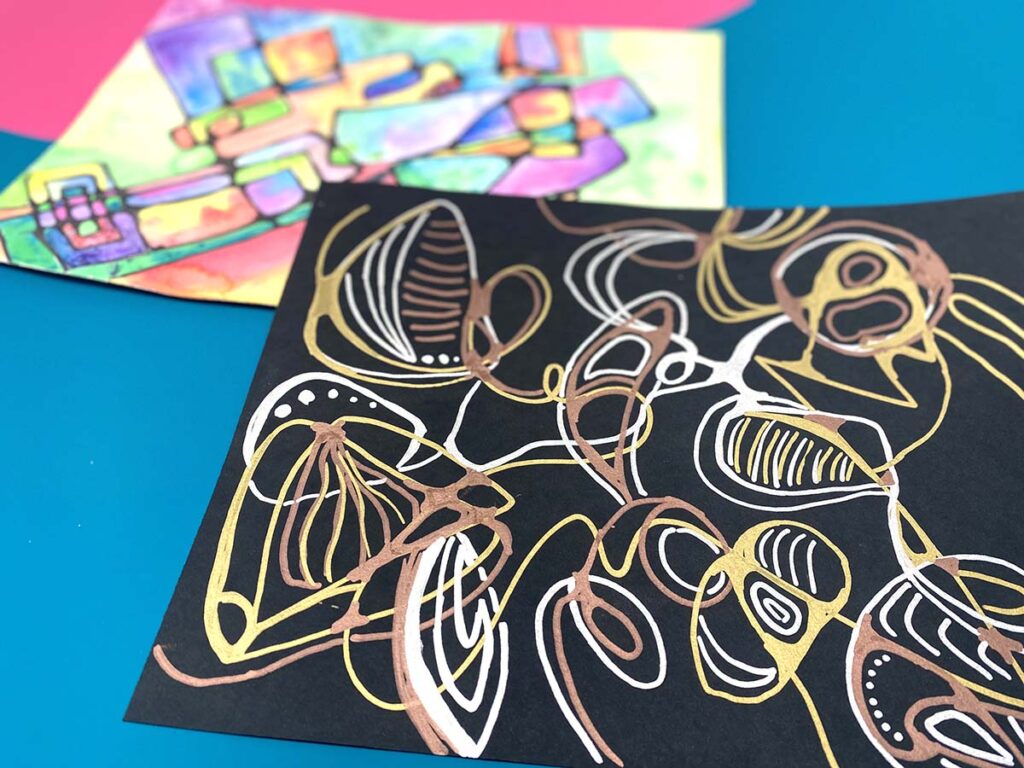
Here are a few Do’s and Don’ts that support a positive return:
Do:
- Incorporate procedures and routines into your lessons that you want them to practice. This is a seamless way to review and have fun!
- Include team-building activities that welcome new students to the space, break the ice, allow for movement, and add much-needed social interaction.
- Treat students with sensitivity if they have difficulty transitioning back. Point out where they can go for support.
- Rethink how you greet students upon return. Ensure conversation focuses on how they are feeling versus the material aspects of the break (i.e. if they received the presents they wanted.)
Don’t:
- Hit the ground running. Plan for a gentle, fun day that allows students to reacclimate.
- Take the mid-year time for granted and assume the students retained all of the procedures and classroom culture. The return from break is an opportunity to revisit expectations and implement changes based on student feedback, evaluations, and observations from the fall semester. For support in reframing your classroom management, take a look at Learning for Justice’s tips.
- Don’t be too hard on yourself. Focus on a joyous return and give yourself grace. Your students’ energy is predictably different as they readjust after time away from school. It will take a week or two to reestablish the familiar school-day rhythms.
Winter break has been long anticipated, especially this year! It is valuable to slow down and relax with those you love. There are a few things you can do over break to make it less stressful when you return. Try reflecting, checking in with students and their families, assessing supplies, reevaluating goals, and updating your calendars. When you go back, embrace the chatter and enthusiasm that comes from time apart! Reinforce your expectations by gently infusing them into a fun artmaking lesson. We hope you consider these tips as you enjoy the rest of your winter break!
How do you navigate the transition between a long winter break and returning to school in January?
What are some ways you can set yourself and your students up for success with a clean slate when we return to school?
Magazine articles and podcasts are opinions of professional education contributors and do not necessarily represent the position of the Art of Education University (AOEU) or its academic offerings. Contributors use terms in the way they are most often talked about in the scope of their educational experiences.
